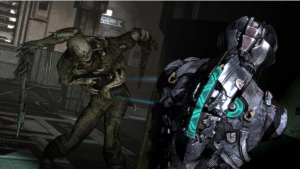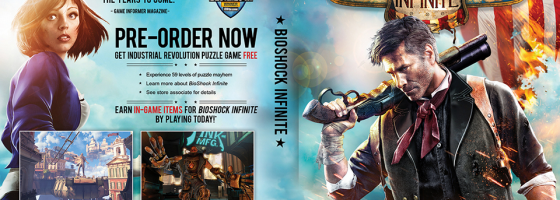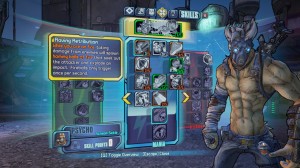Yesterday’s post about achievements and the effect they have on mainstream game design was one of several complaints that older gamers have about the state of the game industry.
As I thought about it further, there are more elements that have become a standard for AAA development and not in a good way. One of the best (or worst) examples of this phenomenon would have to be Bioshock Infinite, which Ken Levine himself admitted to doing. However, Bioshock Infinite is just one of the many examples of AAA design selling out.
The AAA Machine:
Over the last few years, AAA developers and publishers have been reporting losses, from EA to Square-Enix and of course the falling out of THQ. In response we’ve seen questionable decisions such as multiplayer in the Dead Space series, to Square Enix citing Tomb Raider as one of their failures.
A few months ago I wrote a post on the problems facing AAA development and that publishers are putting too many demands on developers. Not every game can or should be aimed at the success seen in the Call of Duty series. Yet, over this generation we’ve seen several elements becoming a standard among AAA games and not in a good way.
Achievement design which is a big one, I’ve already covered yesterday in the link above and I won’t repeat it here.
Instead let’s start with cover design; I’ve lost count of how many games these days featuring a male in a bad-ass pose holding a gun. Incidentally there was a period on the original DS where characters had the same hand reach out pose on the cover.
The key reason for using the same pose and theme was as Ken Levine described it, to appeal to the uninformed. And what better way than to aim at the male demographic with what appears to be a powerful man on the front.
Having a strong character like that is another way of showcasing the power fantasy, which I talked about in my last blog series about realism fallacies in game design.
“And I tried to step back and say, if I’m just some guy, some frat guy, I love games but don’t pay attention to them… if I saw the cover of that box, what would I think?
And I would think, this is a game about a robot and a little girl. That’s what I would think. I was trying to be honest with myself. Trust me, I was heavily involved with the creation of those characters and I love them.”
Ken Levine on the Bioshock Infinite Cover Art
The general audience doesn’t want to play a weak character; they want the bad-ass that will let them feel powerful. Now on one hand I applaud Ken for laying it out like that, instead of trying to BS everyone. But it still reeks of selling out when you have to try to sell your game on something that it wasn’t.
The problem though isn’t that Ken Levine made that decision, it’s that designers are being forced into that position in the first place. While box art is not the most critical factor of a game, there are others that have got gamers on edge today.
Extra Fat Design:
Let’s face facts: When a product does something that is successful, other companies will tend to imitate it to try and get the same success. We saw this happen with the MMO explosion following World of Warcraft and the FPS console surge following Halo.
However going back to an earlier statement, not every game should be designed as the next Call of Duty/World of Warcraft and so on. But that doesn’t stop the decision to add unneeded features to games.
The current popular option is multiplayer. It’s a no brainer for a publisher who has seen the profit that games like Call of Duty, League Of Legends and other multiplayer focused games have earned.
And yes, multiplayer is a great way to extend a game’s life-span, but the genre and series should be factored in.
Uncharted which was designed as a third-person action adventure, had multiplayer modes put in after the first one. The latest Tomb Raider which was supposed to be an epic single-player adventure also had multiplayer put in.
The problem with demanding multiplayer is that it forces the developers to split their time and development on another mode. Energy and money that could be further put into enhancing the singleplayer content or the focus of the game. The designer behind Spec Ops The Line called out this practice and compared the multiplayer that was forced into Spec Ops like having a “cancerous growth”
Another recent example would have to be the Sim City 5 debacle, with the developers touting playing with your friends as the reason for the always online requirement.
“It was literally a check box that the financial predictions said we needed, and 2K was relentless in making sure that it happened – even at the detriment of the overall project and the perception of the game”
Cory Davis: Lead Designer of Spec Ops The Line on the subject of the game’s multiplayer
Now don’t take this as multiplayer modes added anytime being a bad thing. As when the multiplayer was designed in tandem and a part from day one, it can be a great experience. Case in point: The Darkness 2 — instead of creating a deathmatch mode, the developers creating a full co-op campaign with unique characters.
But The Darkness 2 was an exception to the norm outside of multiplayer focused games. And most designers are forced to make something work, similar to requiring achievements no matter what.
The other major complaint is the issue of superfluous DLC. Now, before we talk about that I have to point out that there is a difference between DLC that adds actual content vs. those that are just cosmetic or upset the game balance. I discussed this topic a few months ago and went into more detail there.
In that post I talked about the key differences between what I considered to be good examples of DLC design against those that are more or less a cash grab. There are two key problems that opponents of DLC bring up when discussing the negative aspects of it.
First is day one DLC or on the disc DLC. The argument was that DLC developed this way was content made during the initial development and was factored into the cost of making a game.
Typical DLC that comes out weeks or even months later was content that wasn’t developed during the making of the game and in a sense was considered “overtime” work. The added cost for this content was meant to recoup the time and development spent making this additional content.
My problem with day one DLC is when developers lock major features or content behind it, forcing the player to pre-order. Unfortunately with the state of AAA development, this can be like playing a slot machine to see if the game turns out good (case in point Aliens: Colonial Marines and Sim City 5.)
The other factor with DLC is using it to create shortcuts in the game: Add extra ammo, get a more powerful gun, add God mode and so on. We saw this trend happen with EA and I feel that this clashes with game design. Supporters of this say that if they want to skip a certain part or speed through the game with additional perks then why shouldn’t they?
Going back to talking about achievements and people wanting them to be in every game, shouldn’t the point be to play the game? If someone wants to spend $10 and skip the entire first part of the game, shouldn’t designers take offense to that? And more importantly look at why people are buying those specific shortcuts?

Dead Space 3 was redesigned by corporate pressure to make the game more appealing and instead turned off its fan-base.
Looking at social game design, these types of micro transactions that add resources or skip sections are throwaways.
In that the player is throwing their money away with nothing permanent to show for it and most of the time they would have to spend money on the same things again in the future.
There have been people complaining about the recent DLC for Borderlands 2 that added a new character to the game. However, while it was on the expensive side, this was an entirely new character with new skills and play style to learn.
Regarding Bioshock Infinite, it did have a season pass advertised for it, but there hasn’t been any news announced about it. The optimist in me says that it means that they are working on new stories for the single player. The Pessimist thinks that we’re going to see multiplayer in the form of a simple deathmatch. Then the optimist hopes for a continuation of the Bioshock 2’s multiplayer that I heard good things about.
I’ve been tired of AAA games for a few years now and haven’t bought one at full price in a while. Hopefully publishers and designers will learn that you can’t just keep falling back on the same designs and expect to continue a profit.
But while times are changing, it does sometimes feel that major publishers and companies are living in an echo chamber. Such as the recent reveal that Naughty Dog had to explicitly request that the company who handle the focus testing for The Last of Us to include women in the testing group . Along with how Maxis and EA kept pulling the wool over everyone’s eyes regarding their plans and development of Sim City 5.
With how tough the economy is and the continued escalating cost of game development we may end up going in two directions. Either the companies will learn from their mistakes and change for the better, or continue going and eventually crash and burn. All we can do on this end is to keep watching and support the products we like.



